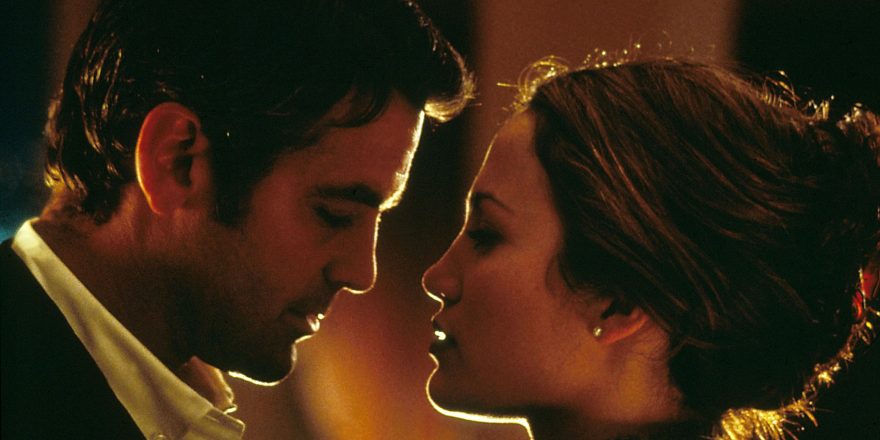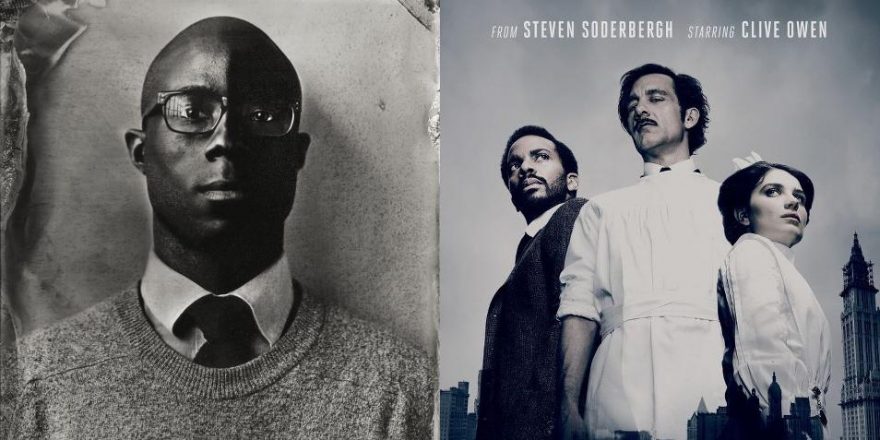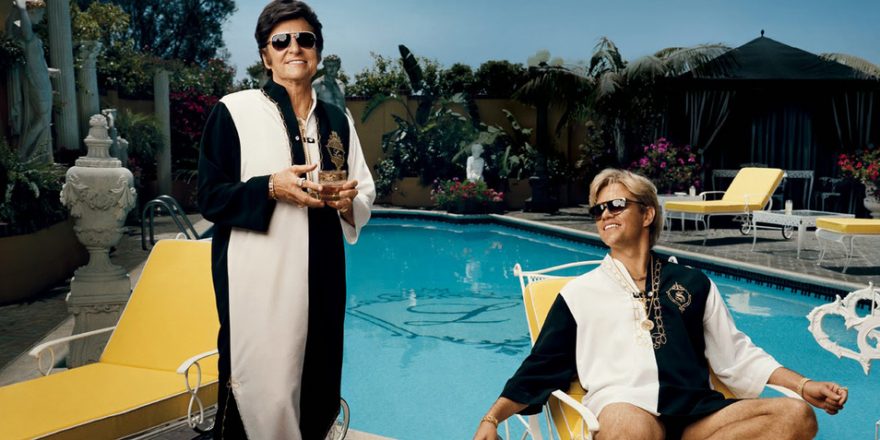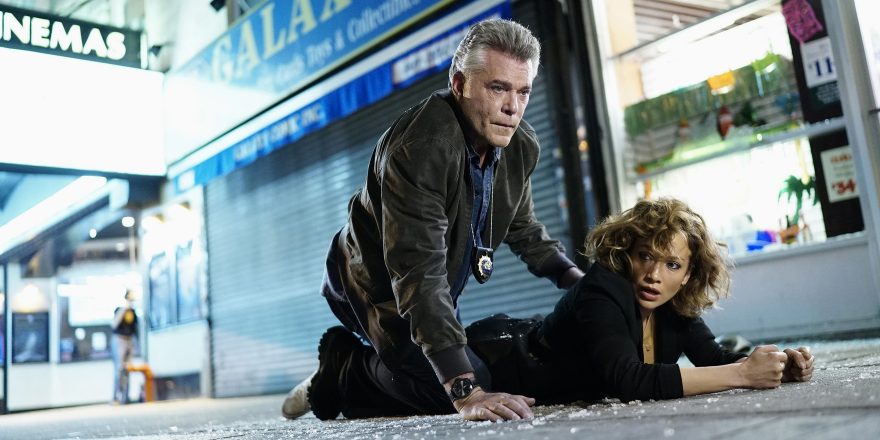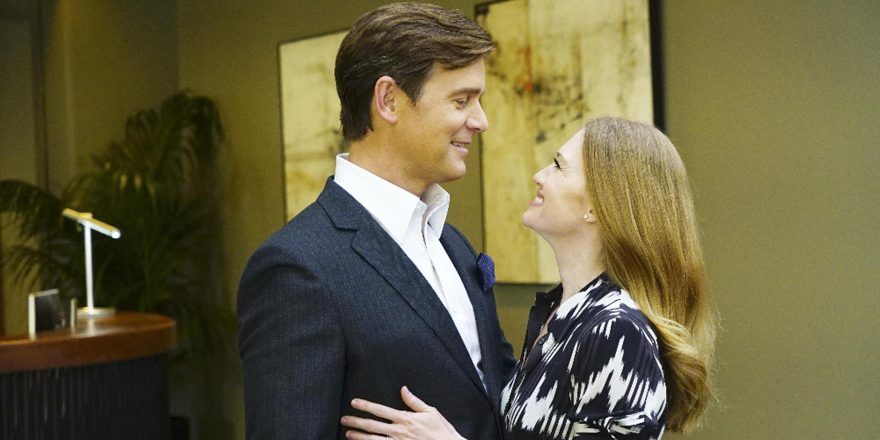Twenty years ago today, one of the most important directors of his generation released the movie that would change his life and career – and thus alter the landscape of American cinema for decades. Out of Sight is a synthesis of all that Steven Soderbergh had been working toward for the first nine years of his career and a launching pad for ideas that would sustain him up to and including this year’s Unsane. It is also one of the best crime films in a decade that saw virtually every prominent auteur (Scorsese, Oliver Stone, Tarantino, Demme, Spike Lee – even Woody Allen and Allison Anders) doing interesting work in the genre. A rousing piece of escapist entertainment that’s fast, funny, and sexy, it’s also surprisingly melancholy, with a male lead as weary as he’s charming and a rage at class inequity boiling underneath its breezy surface. It combines old-fashioned Hollywood glamour with the nonlinear storytelling of Nicolas Roeg and Jean-Luc Godard and juxtaposes silly physical comedy with harrowing – in spite of being mostly offscreen – violence. It is perhaps the one time in Soderbergh’s career when every side of his personality – the studio craftsman, the indie auteur, the guerrilla experimenter – has been on display in one perfect jewel of a film, uncompromising yet as smoothly accessible as a Cary Grant romantic comedy. That Soderbergh was able to pull it all off is truly impressive; that he was even given the opportunity to do so is some kind of miracle.
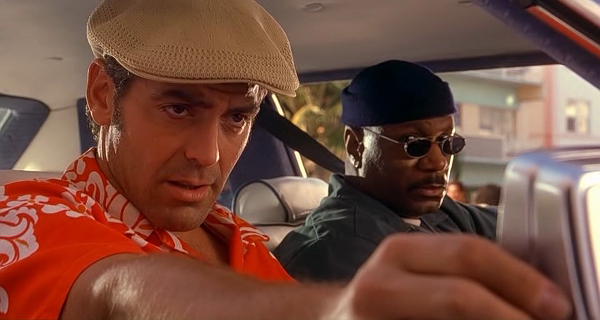
It’s probably hard for people to remember now just how cold Steven Soderbergh was in 1998 Hollywood. In my eyes as a young cinephile, he had spent the years since his celebrated 1989 debut sex, lies, and videotape developing into one of the most interesting filmmakers around – but I had the minority opinion. Kafka, King of the Hill, and The Underneath were all released to commercial indifference and, with the exception of King of the Hill, critical disappointment, in spite of the fact that each was an artistically audacious film which riffed on completely different traditions from the one that came before it. The very thing I liked about Soderbergh – the fact that you never knew what you could expect from him – is what seems to have turned people off. He wasn’t going to be the American Éric Rohmer, or the next Paul Mazursky or Bob Rafelson; no one knew what he was going to be, and you got the impression that he didn’t exactly know either, which for those of us who were fans made him exciting. The Underneath was a particularly fascinating piece of work, an ennui-drenched heist film that turned the bleak worldview of ’40s film noir into the stuff of absurdist comedy; its depiction of a man so clueless that his attempts to correct past mistakes result in nothing but tragedy was a provocative bookend to sex, lies, and videotape’s equally lacerating portrait of male self-absorption.
Soderbergh hated The Underneath, though, feeling that he had squeezed all the life out of the material. In an effort to get back to ground zero, he returned to his hometown of Baton Rouge and shot and starred in Schizopolis, a low-budget mash-up of Richard Lester, Godard and The Kentucky Fried Movie. As loose and rough as The Underneath was formal and polished, Schizopolis was Soderbergh’s best film to date and possibly the funniest and most savage dissection of marriage ever put on American screens – and one of the most creepily uncomfortable, given that Soderbergh chose to cast his ex-wife Betsy Brantley opposite himself in scenes presumably inspired by their own relationship’s dissolution. Working with minimal crew and minuscule resources, Soderbergh recharged his batteries and was ready to get back to work, not on another indie but on something within the studio system – he saw being stuck in either world exclusively as painfully limiting and wanted to move back and forth between the two. The only problem was that Schizopolis ended up another commercial and critical failure, a movie that disappeared from theaters so fast that it made The Underneath look like Jurassic Park. The director who Rolling Stone once described blowing off phone calls from Jerry Bruckheimer was now of such low standing that he couldn’t get into a Miramax Oscar party, where he could see clips from his own debut film playing on a monitor inside.
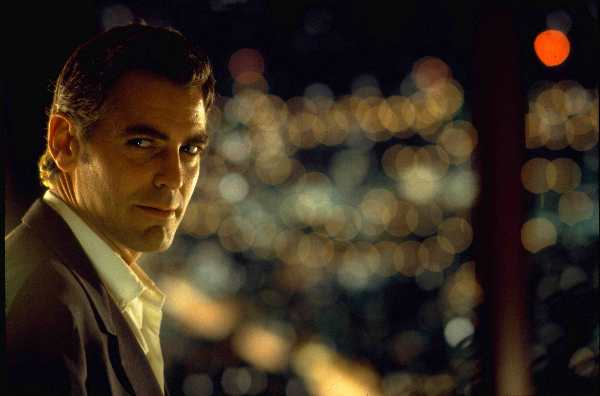
Luckily, while Soderbergh was unsuccessfully trying to set a movie up at Universal, studio exec Casey Silver slipped him Scott Frank’s script for Out of Sight. An adaptation of an Elmore Leonard novel about an escaped convict and a federal marshal who fall in love, the script already had George Clooney attached to play the thief and was red hot thanks to the recent Leonard hit Get Shorty (also expertly scripted by Frank). Soderbergh had to campaign for the job and got it after Cameron Crowe and Mike Newell passed; he later said that he had never felt such self-imposed pressure in his life, knowing that if Out of Sight didn’t work, a huge section of the movie business would be forever closed off to him. This makes the end result – a seemingly effortless confection that oozes pure entertainment value from every frame – all the more remarkable, for if there’s one thing that Out of Sight is not, it is strained or forced. It is also, in spite of its status as a studio assignment that came to Soderbergh with strong producers (Jersey Films) and a leading man already attached, as much a “Steven Soderbergh” film as Schizopolis, a movie whose experiments are beautifully absorbed into Out of Sight’s more superficially commercial framework.
Soderbergh announces his presence right from the first shot, opening on a blurry street that slowly comes into focus before the camera pans and zooms to find protagonist Jack Foley (George Clooney) leaving an office building and ripping off his tie, only to be interrupted when the film’s title appears on screen and freezes the frame. The action then resumes, with Soderbergh’s camera constantly reframing and readjusting to track Foley as he enters the bank he’s set to rob; it’s the exact opposite of an invisible style, yet by setting the parameters right away Soderbergh actually makes his more self-conscious method work as a way for the audience to enter the film rather than be excluded from it. Whereas in Schizopolis the French New Wave techniques were emotionally distancing, pushing the viewer into a more theoretical and analytical position, in Out of Sight the director has it both ways – his disjointed editing and camerawork is initially objective but soon establishes a rhythm of its own that’s hypnotic and intimate, drawing the viewer into Foley’s mindset, in which everything he’s experiencing is the result of either bad decisions or crimes committed against him in the past. As in The Underneath before it and The Limey after it, time collapses in Out of Sight, but the flashback structure of Frank’s script is so inextricably linked to the characters’ psychology and Soderbergh’s visual style that the movie feels as accessible as a more straightforward narrative – maybe even more accessible, since we’ve got such a direct line to the protagonists’ psyches.
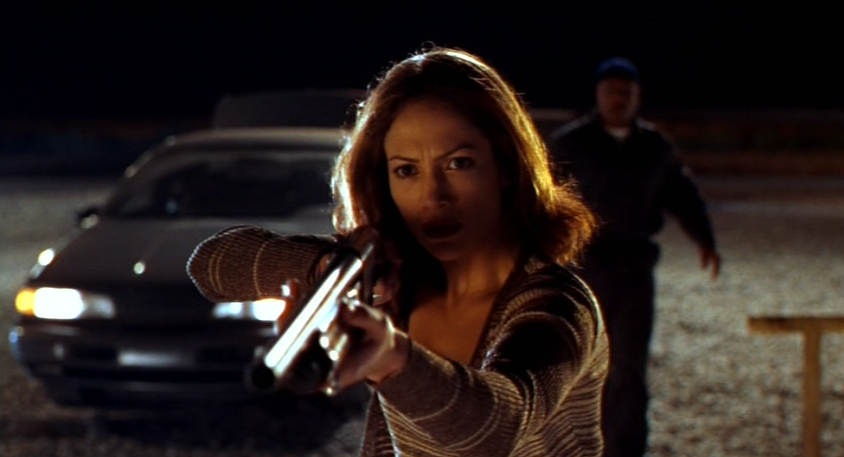
The apex of this approach comes around the film’s midpoint, when the two leads finally get together in one of the sexiest scenes in the history of movies. Cribbing from the love scene in Don’t Look Now, Soderbergh moves back and forth between his protagonists getting into bed and the date that leads up to it, presenting the anticipation of the sex and the payoff simultaneously. By this point in the movie, we’ve become so acclimated to the movie’s fractured style of visual storytelling and to screenwriter Frank’s convoluted narrative that we’re as taken in by the director as the characters are by each other. Yet we can’t help but be aware that because this sex scene is shot so differently than others, it’s implicitly critiquing the way we usually watch such scenes; I can’t put my finger on exactly how Soderbergh achieves the effect, but we’re somehow inside and outside of the movie at the same time. And if Soderbergh is interested in tweaking the way movies treat sex, he’s even more committed to questioning the presentation of violence, especially in the post-GoodFellas era that saw movies like Reservoir Dogs, Get Shorty, El Mariachi, and so many others redefining violence as an irony-drenched vicarious pleasure. Out of Sight adopts the sardonically detached view of violence common to this era up to a point, but Soderbergh strips the fun out of it at key moments, such as a deeply unsettling scene in which Steve Zahn shifts from comic relief to an active participant in a brutal act of carnage. Soderbergh doesn’t show the violence but shows its chilling effect, stripping it of all glamour. Out of Sight is a very “cool” movie, but the violence isn’t what’s cool – the sex is, and the movie’s only tonal misstep, in my opinion, comes at the climax in an act of slapstick gore that feels at odds with the moral seriousness of the rest of the film.
Soderbergh’s innate distrust of glorified violence would find even fuller realization a few movies later in Ocean’s 11, a heist film overflowing with energy and attitude in which not a single person gets killed. From The Underneath on, heists play a rather central role in the director’s oeuvre, and crime in general is positively ubiquitous – in fact, from Kafka on, there are barely any Soderbergh movies that aren’t about crime on some level. For Soderbergh, this is more than just a film buff’s fetishization of a genre; crime is a way for him to explore what he’s really interested in, which is how the profit motive affects every aspect of our lives from sex (The Girlfriend Experience, Magic Mike, Behind the Candelabra) and physical and mental health (Erin Brockovich, Side Effects, Unsane) to war (The Good German, Che) and public policy (Traffic, K Street). What does it mean to thrive in a capitalist system, and who gets left by the wayside? Out of Sight is the real kickoff to a phase in Soderbergh’s career in which this question becomes key, and he shows no signs of losing interest in the subject – it’s at the center of last year’s Logan Lucky and dominates large sections of Unsane. In Out of Sight, Jack Foley commits two major crimes that lead to his arrest, and in both cases they’re motivated by one scene that Soderbergh presents as a flashback. Foley has, as we’ve seen in other flashbacks, helped white-collar criminal Richard Ripley (Albert Brooks) survive in prison, and when Foley gets out he goes to see Ripley for a job. Foley legitimately wants to go straight, but Ripley offers him a menial position and then lectures him about the need to prove himself and “earn something better” than the lousy job he’s offering. The irony, of course, is that Ripley hasn’t “earned” anything – he married a rich woman with a company, sold it off in pieces, divorced her, and has built his fortune on similarly exploiting others without shame and without mercy. Foley’s ultimate downfall in Out of Sight comes not from a refusal to work hard and “earn” it as Ripley insists, but from a refusal to see other people as having less value – although he’s a criminal he doesn’t use guns and when given a choice between his own freedom and saving a life he chooses the life. Crime for him is an act of rebellion against the oppression of true criminals like Ripley, who carelessly play with others’ lives and finances; after he’s thrown out of Ripley’s office, he walks across the street to rob a bank, and when he gets out of jail for that crime he decides to go straight to the source of his misery by robbing Ripley’s house.
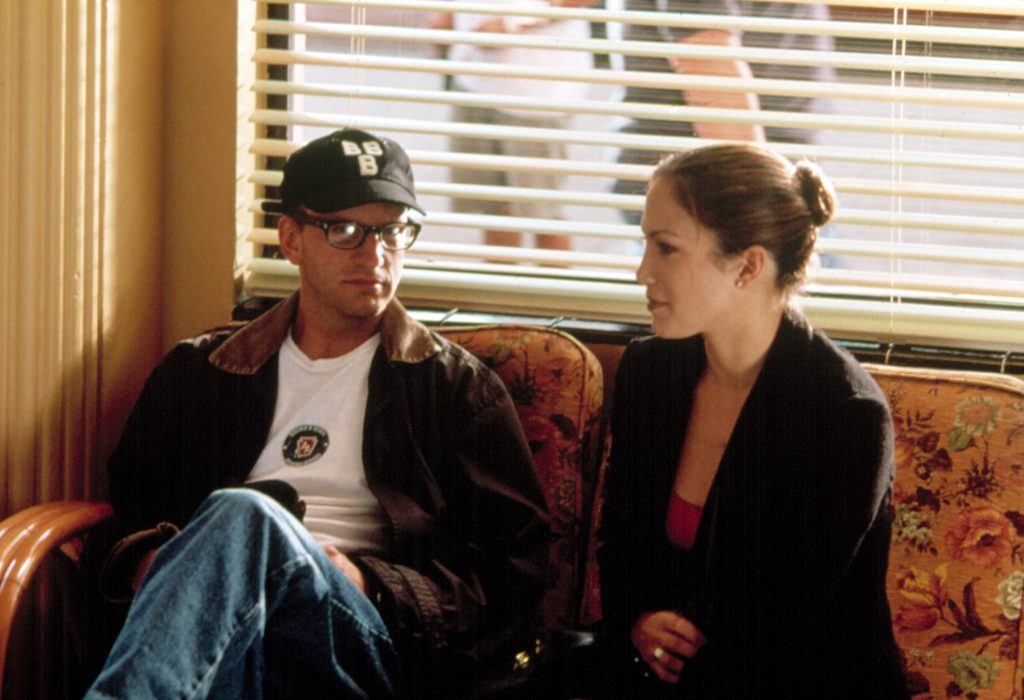
Soderbergh’s interest in inequities of class extends to an interest in how class and power intersect with gender, and throughout Out of Sight he plays with the ways in which men and women are typically rendered in mainstream Hollywood action films. In a lot of ways, Clooney is presented more as a sex object than Jennifer Lopez, who plays his love interest, Karen Sisco; he’s the gorgeous dumb lug with his shirt off, while she’s the supremely confident professional pursuing him. Yet the movie is also extremely conscious of the prejudices Sisco faces as a professional woman – her male supervisor and even her own father underestimate and second guess her in spite of the fact that her instincts are virtually flawless. The flip side of Soderbergh’s preoccupation with solipsistic men in movies like sex, lies, and videotape, The Underneath, Schizopolis, and Solaris (among many others) is a recognition of the obstacles women face in a world ruled by such men – the ways in which Karen Sisco has to prove herself to men who are less competent and intelligent than she is pave the way for the frustrations of the title character in Erin Brockovich, Catherine Zeta-Jones’ anti-heroine in Traffic, and the wrongly imprisoned stalking victim of Unsane. Ultimately Lopez, not Clooney, is Soderbergh’s surrogate in Out of Sight – just as the director is having his cake and eating it too by smuggling his own obsessions and stylistic idiosyncrasies into a major studio summer release, she gets to satisfy both her personal and professional desires by the time the movie’s over. The final scene, in which she captures her man yet places him in a situation via which he can escape on her terms, sums it up perfectly.
In spite of its obvious pleasures and great reviews, Out of Sight wasn’t a hit when it opened in June 1998. Nevertheless, it shifted the industry’s perception of Soderbergh from has-been boy wonder to newly minted studio auteur, and the people at Universal and Jersey Films knew he had delivered, rewarding him with the plum job on Erin Brockovich in 2000. The one-two punch of that film and Traffic gave Soderbergh capital in this business that has sustained him to the present day, and that clout allowed him to take a variety of risks that led to seismic shifts in the industry. For example, Soderbergh was the first major director to release a film day-and-date in theaters, on demand, and on DVD (2006’s Bubble) and the first to shoot a film with the RED camera (Che), and there have been many other minor and major innovations along the way.
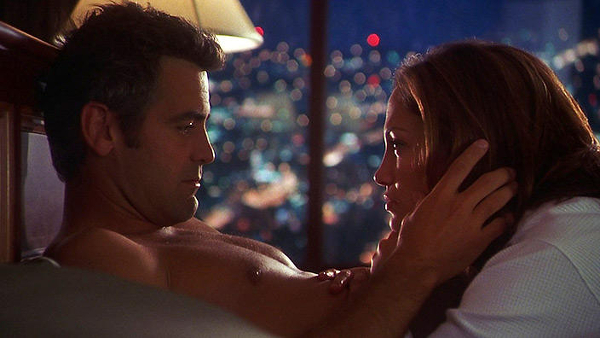
Soderbergh’s best films tend to be about characters who are beaten by systems and people in power or find triumph by rebelling against them, but he’s done something a little different in his own life – he figured out how to harness the system to his own ends and change it. None of us, including Soderbergh himself, knew what Out of Sight would spawn, but its legacy seems more significant with every passing year.



